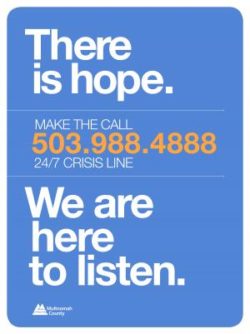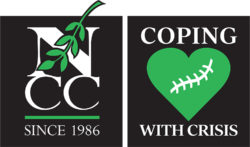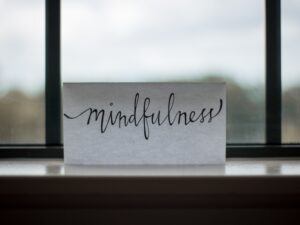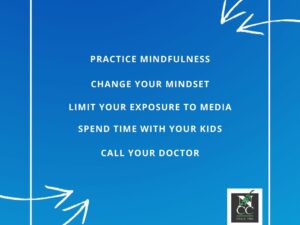August 6, 2019
Traumatic experiences come in many forms, and affect each person differently. In the wake of the back to back tragedies in Gilroy, El Paso, and Dayton, our hearts go out to these communities who are experiencing tremendous loss and heartache. But we’d be remiss to neglect the countless others who are constantly being triggered by these acts of violence.
The American Psychiatric Association (APA) defines a trigger as a reminder that invokes feelings of trauma. Sights, smells, and sounds, as harmless as they may be for some, can cause panic, anxiety, and fear for others. Trauma is a multi-layered and complicated issue – which is why it can vary from person to person. Researchers are now finding that people are experiencing post traumatic stress disorder (PTSD) simply from the inundation of violent, tragic events they see on the news and social media, even if they weren’t directly involved.
In an effort to provide tools for dealing with triggers and trauma, we’ve compiled some practices that are easy to perform anytime, anywhere to refocus on the present.
Progressive Relaxation
Begin by focusing on your breathing – lengthen and deepen each breath. Then, start with one part of your body and make it tight for five seconds. Squeeze your eyes shut, hold that position for a moment, then release the tension and open your eyes. Hunch your shoulders up tight for a moment, and release. Continue tightening or clenching, then releasing, muscles throughout your body. Clench and release fists, tighten and release arms, legs, and feet. It doesn’t matter which order you choose, which muscles you tense and release, or whether you tense and release all the muscles listed here. You can do this sitting in your car or standing in line at the grocery store. If you clench and release your toes, you can help yourself relax in a public setting and no one will even notice.
Why it matters: Focusing on tightness and relaxation throughout the body retrains the body, after a trauma, to not be overanxious or on hyperalert.
Diaphragmatic Breathing
Sit or lie down. Take ten slow, deep breaths. Place one hand on your belly and one on your chest, breathe in deeply, and feel the breath fill up your lungs. Focus on breathing out as slowly as possible until the lungs are completely empty, then allow them to refill by themselves. Notice your lungs emptying and refilling. Notice your rib cage rising and falling, and the gentle rise and fall of your shoulders.
Let your thoughts come and go. Try to just observe them, as if they’re passing cars, or clouds floating by overhead. Count as you breathe. Breathe out for at least two counts longer than you breathe in.
Why it matters: Being able to focus on your breathing will help calm you down.
Sensory Inventory
Choose one sense – it doesn’t matter which one – and notice what you perceive with it. For example, close your eyes and just focus on hearing. What do you hear? After you have exhausted this sensory awareness, move on to other senses. What do you smell? What do you see? Can you taste anything? What do you notice about your body’s contact with your clothing and with your environment?
Why it matters: Knowing that in this very moment you are in the present and utilizing your senses helps ground you to your current surroundings.
Breathe 911
Open the app or web, and you will be guided by a trainer with cues for slowing your breathing and reminding you of safety. You can set it up for your preferences in speed and length.
Why it matters: Being able to utilize tools on the go helps with calmness, comfort, and relaxation to the body and mind.
Thought Stopping
There are ways to help keep negative or traumatic thoughts from entering the mind. Immediately yell, “STOP!” when a memory is entering your mind. Or, you can wear a rubber band around your wrist and snap it when a memory occurs. This will help trigger the brain to remove these memories over time.
Why it matters: Retraining the brain so that the trauma is halted in the moment keeps it from continually reoccurring.
Get Help
If you’re having a mental health crisis, connect with these 24/7 crisis lines for support:
The Northwest Catholic Counseling Center is here for you. Call our intake line at 503-253-0964 to connect with a mental health professional.
We believe that cost should not be a barrier to care. While we can bill insurance, we also providing sliding scale fees for those who are uninsured or under-insured.
Sources:
Content by Nancie Potter, JD, LMFT ; Marchelle Carl, BS ; and Lauren Shechter, LCSW
Baranowski, Anna & J. Eric Gentry. (2015). Trauma Practice. Boston, MA: Hogrefe Publishing Corporation.
Ries, Julia. Experiencing PTSD After Shootings, Even If You Weren’t There, Is Normal. In Rewire. Retrieved August 6, 2019, from https://www.rewire.org/experiencing-ptsd-after-shootings-normal/.
American Psychiatric Association. Taming Triggers for Better Mental Health. Retrieved August 6, 2019, from https://www.psychiatry.org/news-room/apa-blogs/apa-blog/2017/03/taming-triggers-for-better-mental-health.








